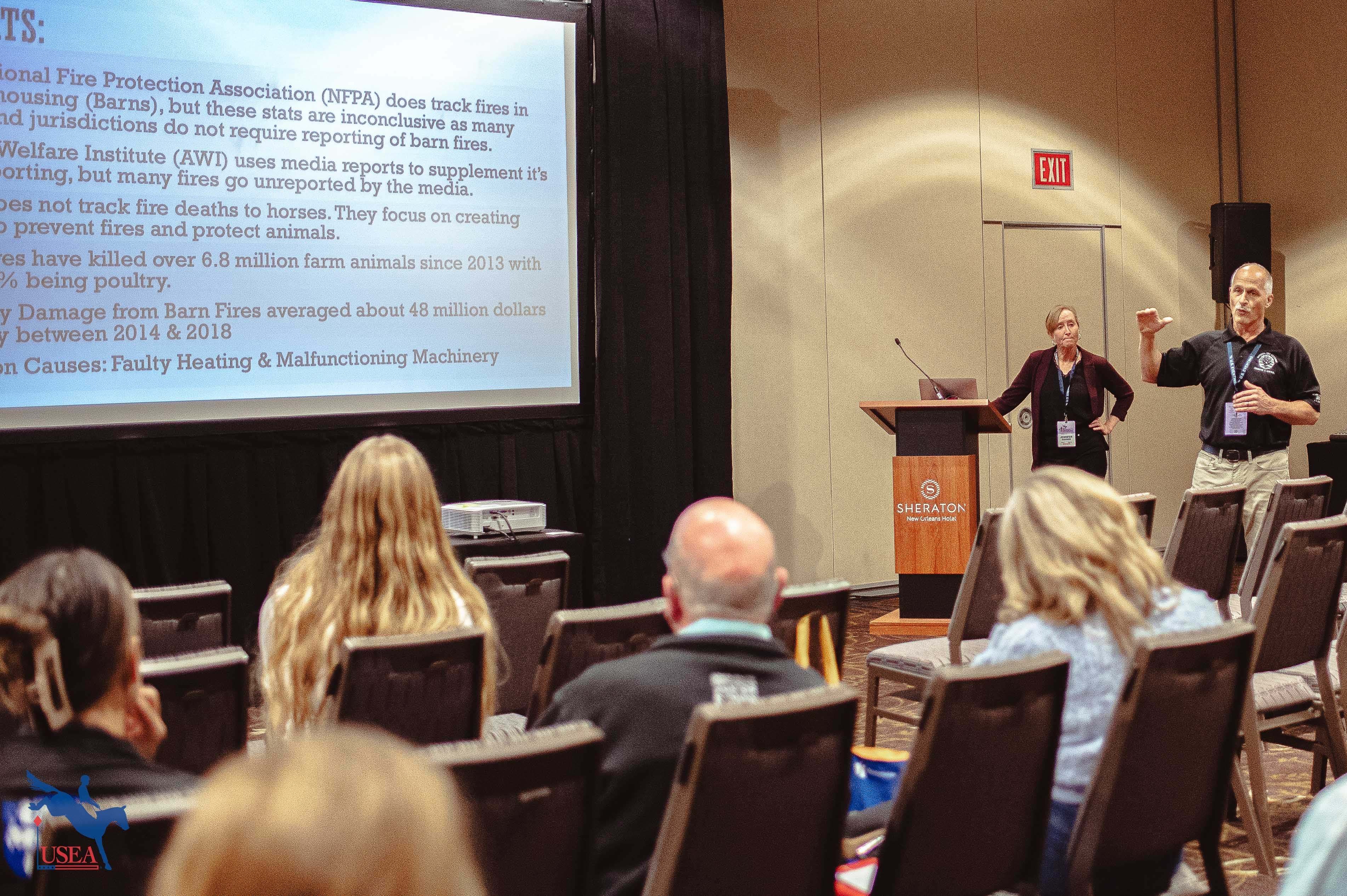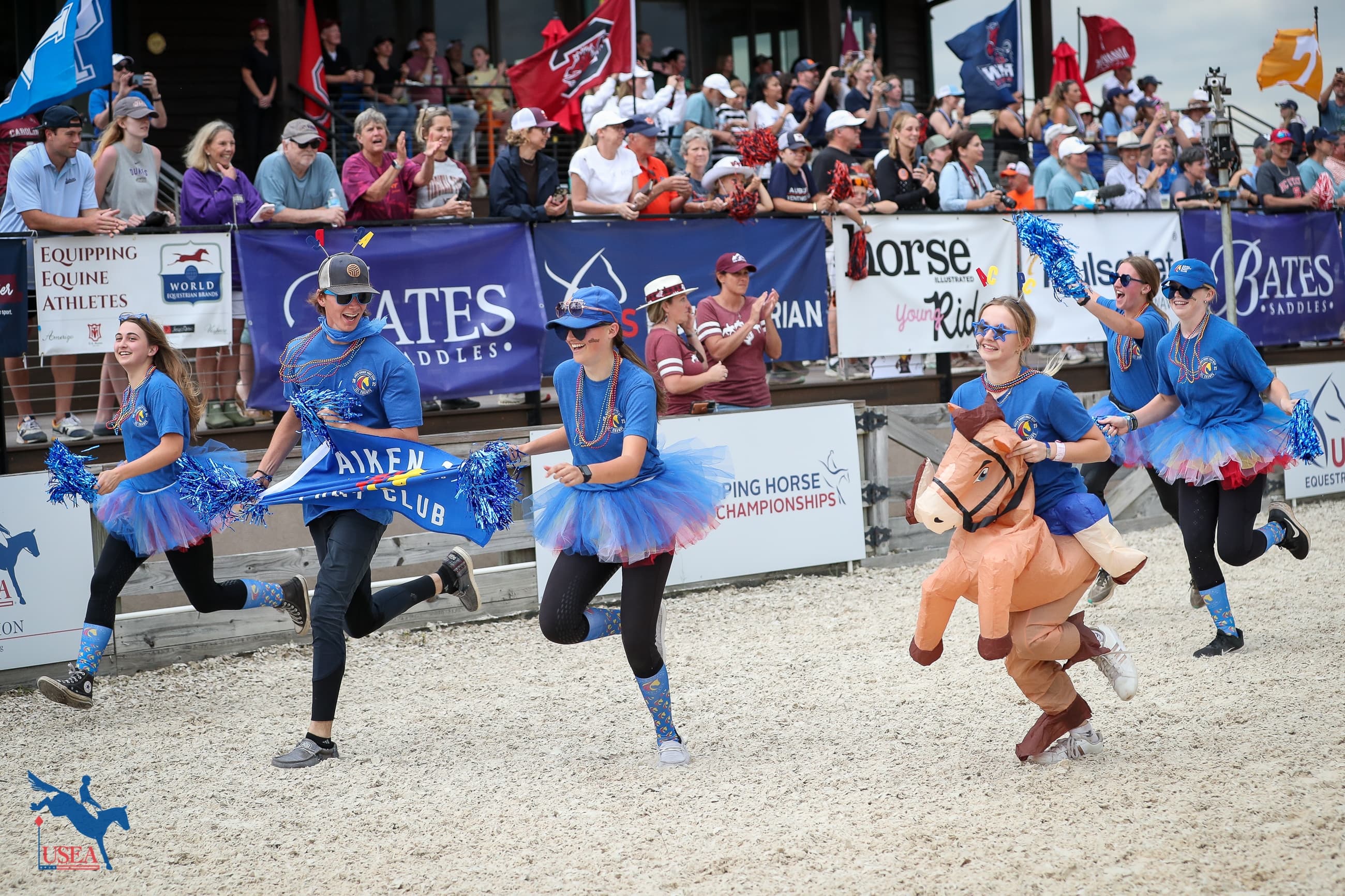Getting Out of the Box For Cross-Country Schooling

Recently, while teaching the USEA EA21 Central Clinic in Kansas City, Missouri, I found myself reflecting on what it means to produce eventing horses all around this huge country where trainers, coaches, and athletes find themselves with vast differences in access to cross-country courses, schooling fields, or just open land.
How do we uphold the standards of training that are expected of the modern event horse and rider? How do we ensure we are exposing horses and riders to the appropriate questions that are associated with their desired level of competition?
During the jumping session of the clinic we were confined to the arena, albeit a rather large space, which presented the question: what can we create in the ring that would help hone the skills needed for "out there?"
Firstly we must always be refreshing our understanding of what is expected of horses and riders at each level. The USEA Eventing Handbook by the Levels is a handy tool for every trainer, coach, rider, parent, or basically anybody related to the sport. This guide clearly outlines at each level the specific skills required by riders, and concepts that are specifically targeted to ensure horses and riders are adequately prepared for the level.
During my recent experience competing in Europe, I found myself at a facility without access to cross-country schooling. I was without transport and situated quite some distance from any type of schooling opportunity. I was based with fellow Aussie Megan Jones, and we were preparing for the upcoming Nations Cup at Haras de Jardy.
The only materials available were show jumps, so we had to start to get creative. We acknowledged our desire to build some questions that would challenge the horses and decided to embrace our somewhat "rustic" beginnings back home. We enjoyed an excellent team bonding experience harvesting some "brush" from the forest below the barn—and by "brush" I mean there was some serious improvising as we gathered as many ferns as we could find.
Whilst bailing twine might be considered an equestrian’s best friend, we had the luxury of utilizing zip ties, the modern equestrian’s new best friend. Our fence construction was unlikely to land us any jobs as course builders, but we were pretty proud of our work. As I mentioned earlier, it's crucial that riders and trainers understand what’s expected at each level, and plan accordingly. I feel it is important to understand that to be competent at a level, training a little beyond that level is important if you’re looking to move beyond that at some point.
When setting arena exercises it’s important to note that you have a LOT of freedom when it comes to setting distances, lines, angles, and heights. More so than what you will find when schooling out in the field. When we turn our attention outside the arena there are two different types of cross-country schooling locations. Schooling fields and competition facilities. Interesting to note that when you’re schooling over a competition course, the distances are set for a "competition canter," which means riders and trainers must acknowledge the type of ground cover needed to answer some of the questions set.
That’s a canter that can be difficult to replicate in schooling situations so it’s important to acknowledge that when presenting to combinations. Often, when we are presenting new questions to horses and riders reducing the speed required helps solidify understanding. Especially when we are talking about narrow fences and angles. That’s where you could argue there is some benefit to building questions in an arena environment where some of the variables can be controlled in a way that horses can understand the question where the trainer can control the height.
When we are thinking about training horses over cross-country obstacles it is important to remember the objectives. Horses should be encouraged to "hunt" the fences. Cross-country should be a game to them— an enjoyable experience that is almost like playtime for them. Too often I have students come for lessons wanting to school the competition course, focusing on the questions on the course, rather than the broad skill set required at the level. Perhaps the set of double banks isn’t on the course THIS time, but isn’t that a skill that should be practiced whenever the opportunity presents itself? I thoroughly enjoy piecing fun loops together, incorporating different level questions (always appropriate to the pair), allowing the rider to learn about the change in speed, stride length, balance, and turning required for each question.
We must always keep evolving as trainers and acknowledge not every rider has access to top-class facilities all the time. That getting creative whilst keeping the goals in mind is so important. The foundation of our sport was built on instinctive riding and quick decision making and that must remain our goal when training horses. Don’t be afraid to get creative in your arena at home if that is what you have access to most of the time. Teach the skills needed so that when you get the opportunity to hit the open field you’re more than ready.
Bec Braitling is an Australian five-star event rider based in Paso Robles, California. She operates Arnell Sporthorses with Lauren Burnell out of Twin Rivers Ranch and is a USEA Eventing Coaches Program Level V certified coach.














